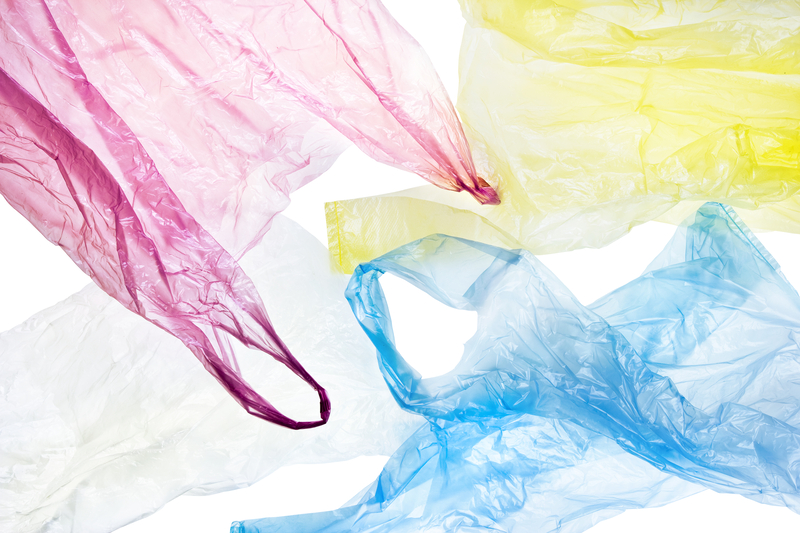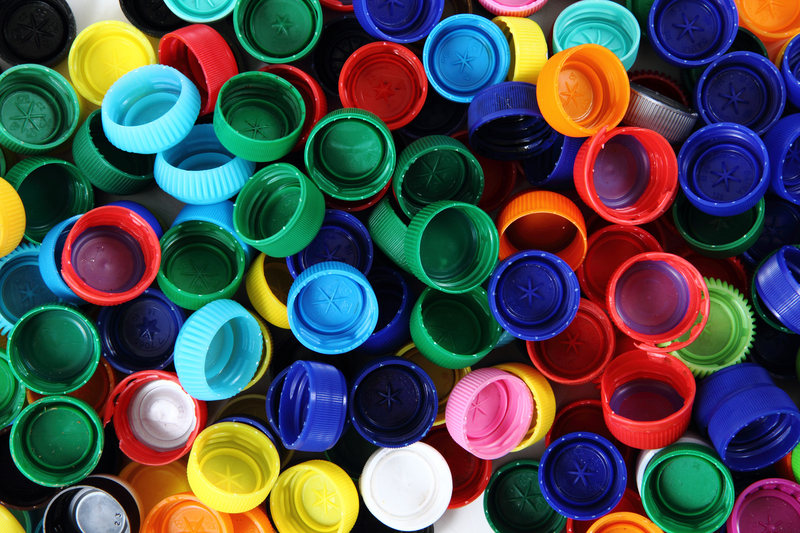Building a Greener Future with Packaging and Cardboard Disposal Innovations
As the world wakes up to the environmental crisis, sustainable packaging and efficient cardboard waste disposal have emerged as pivotal components in creating a greener, more responsible future. The drive towards eco-friendly packaging solutions is not only transforming how products reach consumers but also playing a significant role in protecting our planet. In this article, we explore the latest innovations in packaging and cardboard disposal, their environmental impacts, and actionable steps individuals and businesses can take to support a greener future.

Understanding the Importance of Sustainable Packaging
Packaging is an unavoidable aspect of the global supply chain. Yet, traditional packaging materials--such as plastics and composite cartons--take centuries to break down, polluting the environment in the process. This has spurred a wave of innovation, with an emphasis on sustainable packaging alternatives and advanced cardboard disposal solutions designed to minimize waste, conserve resources, and reduce greenhouse gas emissions.
Why Sustainable Packaging Matters
- Reduces landfill waste: Eco-friendly packaging materials decompose more quickly and can often be recycled or composted.
- Conserves natural resources: Using recycled or renewable materials in packaging cuts down on resource extraction and energy use.
- Minimizes carbon footprint: Lightweight, compostable, and recyclable packaging lowers transportation emissions.
- Promotes corporate social responsibility: Consumers increasingly expect brands to adopt sustainable practices, boosting company reputation and loyalty.
Current Challenges in Packaging and Cardboard Disposal
While there is growing momentum, transitioning to green packaging and improving cardboard disposal systems is not without its challenges:
- Recyclability Concerns: Not all cardboard is created equal--coatings, dyes, and adhesives can complicate the recycling process.
- Supply Chain Complexity: Packaging must protect products and withstand shipping while minimizing environmental impact, necessitating a careful balance.
- Cost Factors: While prices for green materials are dropping, they can still be more expensive than conventional options.
- Consumer Awareness: Many consumers lack knowledge about how to properly dispose of or recycle cardboard packaging.
Innovative Packaging Solutions Leading the Way
Thankfully, forward-thinking companies and researchers are developing cutting-edge eco-friendly packaging technologies that combine functionality with minimal environmental harm.
Biodegradable and Compostable Packaging
One of the biggest breakthroughs in sustainable packaging is the proliferation of biodegradable and compostable materials. Derived from renewable resources like corn starch, mushroom mycelium, or bamboo fibers, these materials break down naturally in composting environments.
- Starch-Based Packing Peanuts: A greener replacement for polystyrene, these dissolve in water and leave no toxic residue.
- Mushroom Packaging: Made by binding agricultural waste with mushroom roots, this packaging is versatile, durable, and backyard-compostable.
- Sugarcane Bagasse: Used for food trays and containers, this fibrous byproduct is compostable and energy-efficient to produce.
Recycled and Recyclable Cardboard
Cardboard boxes and cartons remain the backbone of e-commerce and retail shipping. The focus now is on using post-consumer recycled cardboard and designing for recyclability. Brands are also reducing the amount of virgin material used in packaging, lightening the load on forests and landfills.
- High Recycled Content: Boxes made with up to 100% recycled fibers are increasingly common.
- Mono-material Packaging: Using a single material type (like pure cardboard) simplifies sorting and recycling.
- Innovative Inks and Adhesives: Water-based and biodegradable options ensure the end product can be effectively recycled or composted.
Smart Packaging Technologies
Digital innovation is also making packaging greener. QR codes and NFC tags on packaging encourage consumers to learn about disposal options, local recycling points, and corporate sustainability initiatives--all with a simple smartphone scan.
Transforming Cardboard Disposal with Smart Solutions
Beyond packaging design, effective cardboard disposal innovations are essential to closing the loop and keeping valuable resources in play.
Advanced Cardboard Recycling Programs
Municipalities and businesses are rolling out advanced recycling infrastructure:
- Curbside Collection Programs: Expanded to cover all types of cardboard, ensuring residential and commercial waste is efficiently gathered.
- Automated Sorting Facilities: Using AI, robotics, and camera systems to sort cardboard from other recyclables, improving purity rates and efficiency.
- Reverse Logistics: Many retailers now offer in-store drop-off points for cardboard packaging, reducing contamination and improving recycling rates.
Upcycling and Reuse Initiatives
Not all cardboard waste needs to be pulped. Creative upcycling programs turn clean, used cardboard into furniture, storage solutions, and even art installations, extending the lifespan of the material and reducing the need for new production.
Corporate Leaders in Greener Packaging
Global brands have recognized the importance of a green packaging and disposal strategy in both securing customer loyalty and meeting environmental regulations.
- Nike: Switched to 100% recycled cardboard shipping boxes, with clear on-box messaging about recycling.
- Unilever: Committed to halving virgin plastic use and making all packaging recyclable, reusable, or compostable by 2025.
- Amazon: Introduced "Frustration-Free Packaging" that is 100% recyclable and designed to minimize waste.
These industry shifts set new standards and push competitors to innovate, accelerating the green packaging revolution.
How Consumers Can Support a Greener Packaging Future
Every consumer has a critical role to play in driving demand for sustainable packaging and responsible cardboard disposal. Here's how you can contribute:
- Choose Sustainable Brands: Support companies prioritizing eco-friendly packaging and clear recycling instructions.
- Separate and Flatten Boxes: Flattening cardboard before recycling saves space and improves processing efficiency.
- Compost When Possible: If you have access to industrial composting, compost biodegradable packaging materials.
- Avoid Contamination: Ensure that cardboard is clean and dry before recycling.

Looking Ahead: The Future of Packaging and Cardboard Disposal
The future of green packaging and cardboard disposal will be shaped by ongoing innovation, consumer awareness, and legislative action. Several trends are set to define the next decade:
- Circular Economy Models: Moving beyond recycling to focus on reuse and closed-loop systems where packaging circulates indefinitely.
- Material Science Breakthroughs: Development of ultra-high-strength, biodegradable materials offering the functionality of plastic with none of the environmental downsides.
- Digitized Waste Tracking: Advanced tracking technologies providing transparency and accountability in how packaging is disposed of and recycled.
- Policy and Regulation: Governments worldwide are strengthening policies on single-use packaging and mandating recycled content in new products.
Conclusion: Partnering for a Greener Tomorrow
Building a greener future through packaging and cardboard disposal innovations is not just an environmental imperative--it's an economic and ethical responsibility. The shift to sustainable packaging and responsible waste management unlocks a cleaner, healthier world for future generations, safeguarding biodiversity, reducing pollution, and creating green jobs.
By choosing products backed by sustainable packaging, embracing recycling and upcycling opportunities, and supporting innovation, each of us can be an agent of positive change. Together, let's champion a future where packaging protects both our products and our planet.
Now is the time for bold action, collaborative innovation, and shared commitment to sustainability. The greener future we all aspire to begins with the cardboard box in your hand.
Frequently Asked Questions
- What is the most sustainable form of packaging? Packaging made from renewable, recycled, and biodegradable materials, designed for easy reuse or recycling, is the most sustainable. Look for certifications such as FSC (Forest Stewardship Council) for cardboard products.
- How can I dispose of cardboard packaging responsibly? Remove any tape or non-paper elements, flatten the boxes, keep them dry and clean, and place them in your curbside recycling bin or a dedicated recycling drop-off center.
- Are biodegradable materials always the best choice? Biodegradable materials are excellent when properly composted, but if they enter a landfill, decomposition can be much slower. Aim to compost where possible or choose recyclable alternatives if industrial composting is not available in your area.
Together, through innovation and informed action, we can pave the way for a future where packaging is part of the solution, not the problem.